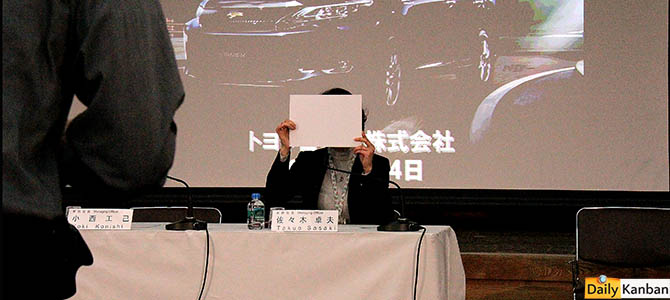Two weeks ago, Mark Hogan, formerly at GM, and now freshly minted board member at Toyota, told Reuters that Toyota absolutely needs more and bigger plants in Mexico. Days later, Bloomberg saw Toyota execs “scouting the country for possible factory sites.” A minor media frenzy ensued, touting the low labor costs and favorable trade accords south of the border. Yesterday, the story was shot down.
A new Reuters story says that the expansion south of the border was put on ice. Whoever cooked it up should have asked Toyota’s boss first.
Quarter after quarter, Toyota told media and analysts to forget any new factories before 2016. When reporters asked about Mexico at the last quarterlies on August 6, they were told there are no plans. When reporters probed, saying that executives in the U.S. said otherwise, the answer was that those executives better check with the home office first.
For nearly a year, Toyota has been pushing a basically zero growth strategy. While it sometimes feels as if Volkswagen and GM launch more plants than cars, Toyota steadfastly maintains its “no new plants before 2016” mantra, and they do it with a knowing smile. When talking to his execs, Akio Toyoda talks about stairs one must climb up to get higher, but a stair has the occasional landing where one can catch a breath. This where Toyota is now.
There are two leitmotifs in Toyota’s no growth talk:
- The Japanese carmaker is still reeling from what in Japan is called the “Lehman shock,” elsewhere known as the Global Financial Crisis of 2008. Seemingly expecting another financial tremor, Toyota does not want to be caught again building factories for cars nobody can afford.
- Top execs at Toyota repeat again and again that the company should devise clever methods of getting more out of existing capacities. “There’s absolutely no unused capacity lying around anywhere in North America?” Toyota boss Akio Toyoda asked his execs according to Reuters. “Installing production capacity to try to trigger growth is the old way that got us in trouble before.”
Toyota is currently running at a global capacity utilization of around 95 percent, meaning that some plants in Toyota’s world must be redlining. Capacity utilization above 80 percent is considered good in the industry. At 95 percent across the board, auto execs elsewhere would be seen ribbon-cutting around the world. Not at Toyota.
Toyota has been talking a lot about its Toyota New Global Architecture (TNGA). Very little is known about it. I would not be surprised if production engineering plays an essential part in TNGA, with the aim of increasing a plant’s output and flexibility, while keeping CAPEX in check.
Huge up-front investments reportedly are the Achilles heel of Volkswagen’s MQB etc. kit concept. It involves a new, or at least completely revamped factory. As a rule of thumb, the industry figures that the plant makes for 60 percent of a car’s cost, with labor and materials demanding another 20 percent each. Lowering the cost of a plant would cut a lot of fat.






